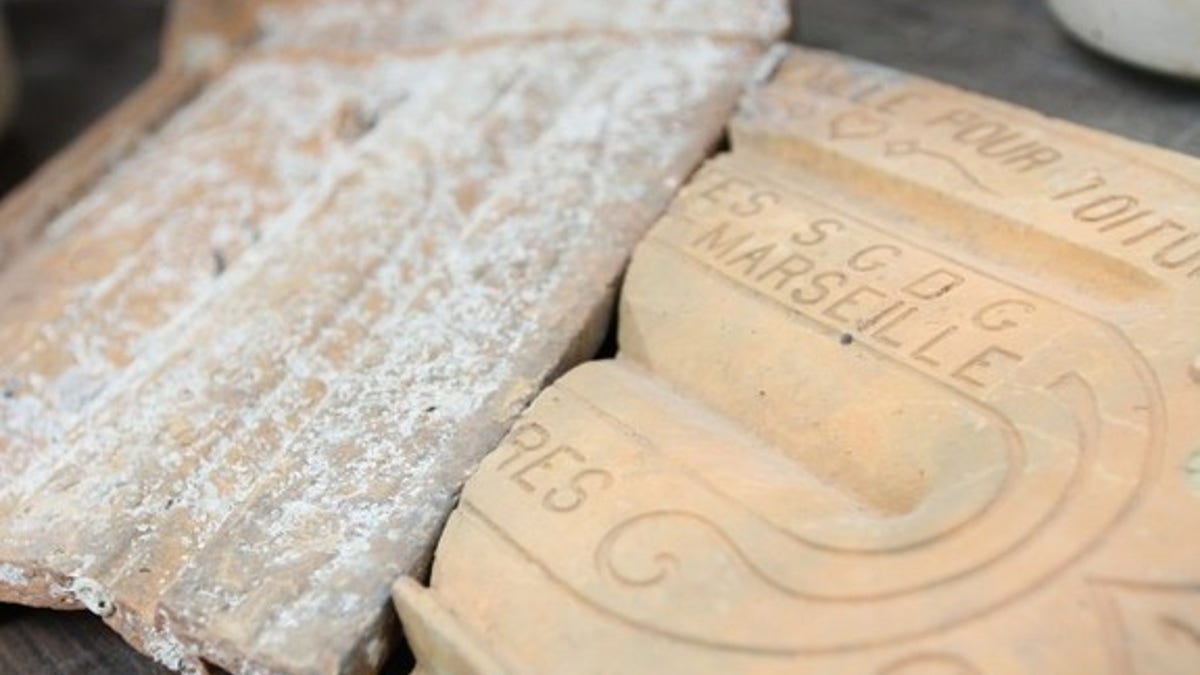
A sunken ship that was uncovered in a lagoon off the coast of Israel may have once belonged to a famous banking baron. Items recovered from the ship, shown here, suggest it was navigating the seas in the late 1800s. (University of Haifa)
A mysterious sunken ship uncovered in the waters off Israel nearly 40 years ago may have belonged to a famous French baron, new research suggests.
By poring over records and documents from the 1800s, researchers were able to tie the wreck to the Baron de Rothschild (1845-1934), or Edmond James Rothschild, one of the preeminent French bankers of his day.
Still, without a name, number or other identifying feature on the ship, the case is still circumstantial, said study co-author Deborah Cvikel, a nautical archaeologist at the Leon Recanati Institute for Maritime Studies at the University of Haifa in Israel.
"It's not 100 percent sure, but it's not something that we can exclude," Cvikel said. "It's very probable." [Images of Gold Coins Found in Israeli Shipwreck]
Local secret
In 1976, a diver first uncovered the wreck in the Tantura Lagoon near Dor Beach, a deceptively calm-looking anchorage that has been used since antiquity. The ship sank to a fairly shallow depth, making it easy for scuba divers to uncover and explore.
"You could see the tips of the framing timbers emerging from the sand," Cvikel said.
However, the diver who discovered the site didn't have the expertise to be able to undertake a rigorous study of the ship, or the money to finance an excavation. And no one else stepped in for decades. When Cvikel and her colleagues finally undertook a detailed excavation in 2008, they uncovered a well-preserved ship with two masts. When it sank, the schooner was laden with goods, such as ceramics, glassware, utensils and even provisions well past their expiration date, such as sacks of hazelnuts and peanuts, Cvikel said.
By analyzing some of the factory stamps on the glassware and ceramics onboard, the team concluded that the ship likely sank in the late 1800s. Ceramics emblazoned with the lion motif of the company Guichard Frères, which operated between 1889 and 1897, narrowed the timing of the ship's demise.
Circumstantial case
However, no traces of the builder or the ship's name remained.
So Cvikel and graduate student Micky Holzman, also at the University of Haifa, began looking through old documents from the time period of the shipwreck.
It turned out that the Baron de Rothschild, one of the most famous members of the Rothschild banking dynasty in Europe, was also a prominent Zionist, meaning he supported the creation of a Jewish state in Palestine, which was then part of the Ottoman Empire.
In the late 1800s, he founded one of the first Jewish settlements, called Zichron Yaakov, next door to the beach where the ship sank. The new settlement needed goods and services, so the baron also began producing goods locally.
He also built a glass factory to produce bottles for a winery in Zichron Yaakov. He purchased three ships to bring raw materials to the factory from France, according to old documents. In addition, the documents mention that the ships got damaged. Two of the ships were sold, but the third was not mentioned at all after that.
The fact that the third ship was never mentioned in any later documents lends support to the idea that the sunken schooner under study, lying at the bottom of Tantura Lagoon, is, indeed, the baron's lost third ship.
Long-held rumor
The idea that the baron was the owner of the ship is not new, Cvikel said.
"When Micky started uncovering this story, then local people said, 'There's no news; that's the Baron's ship; everybody knew that's the Baron's ship,'" Cvikel told Live Science.
As for why the ship sank, it may have to do with the lagoon, which is tricky to navigate and requires prior knowledge of its shape, Cvikel said.
"We have something like 26 shipwrecks in the lagoon dated from as early as the Roman period," Cvikel said. "We think it was a place where ships were hoping to find refuge during stormy weather, but when they got closer, they realized — ah! — they had made a big mistake, and they sank."
- Shipwrecks Gallery: Secrets of the Deep
- Disasters at Sea: 6 Deadliest Shipwrecks
- Gold Rush Shipwreck: Photos of a Real-Life Underwater Treasure Hunt
Copyright 2015 LiveScience, a Purch company. All rights reserved. This material may not be published, broadcast, rewritten or redistributed.
